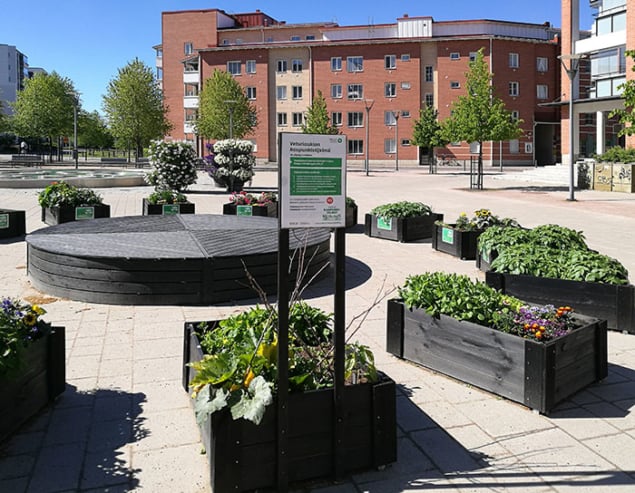
Urban agriculture is on trend. From restaurants that harvest their salad leaves from exterior walls, to town-centre planters where passers-by can nibble a strawberry or two, people are finding inventive ways to grow food in urban areas. Now a review indicates that exploiting waste streams – heat, light and wastewater – could lead to a new wave of ultra-efficient urban agriculture schemes.
Currently an estimated 15% of total US energy demand comes from the food system. Fertilising and heating crops, then transporting them from farm to fork, requires significant amounts of energy. Now, Eugene Mohareb from the University of Reading, UK, and colleagues have performed a literature review to provide new insights into the energy implications of scaling up urban agriculture in cities in high-income countries.
Given that more than 75% of energy use in the food system of high-income countries is estimated to occur beyond the farm gate – in transportation, packaging, processing and waste management – it’s clear that urban agriculture has the potential to cut energy use, as previous studies have indicated.
However, in some circumstances urban agriculture can increase pressure on resources and make higher energy demands. “Urban agriculture projects that rely on artificial light sources can require much greater energy inputs than otherwise, even when considering increased yields,” said Mohareb. Meanwhile, water in urban areas is likely to come from municipal water treatment plants so is generally more energy intensive to produce than, say, irrigation water from local surface water.
With this in mind, Mohareb and his colleagues stress that any increase in urban agriculture needs to consider where these additional inputs – heat, water, light and nutrients – are going to come from and how their energy impact compares to conventional farming.
But sometimes these problems can be overcome by making use of urban waste streams. “Many institutions and businesses have large centralised heating systems, often relying on natural gas as a fuel, whose waste heat and carbon dioxide is simply exhausted,” said Mohareb.
Integrating urban agriculture into these locations and tapping into the rich waste stream can be a win–win situation. Already there are examples, with the likes of Evesham Vale Growers using anaerobic digesters to process all their waste, with the resulting carbon dioxide and heat fed back into the greenhouses. Meanwhile, wastewater and storm-water streams are currently underexploited, but could help relieve the pressure that urban agriculture places on municipal water and wastewater treatment plants.
Ultimately, Mohareb and his colleagues conclude that there are no “one-size-fits-all” recommendations for urban agriculture, and that each location needs to consider its local circumstances.
“Crop type, local climate, production method and scale, availability of waste resources, co-location approaches and intensity of production all need to be considered,” writes the team in Environmental Research Letters (ERL) . But without a doubt there is potential for urban agriculture to grow and play a role in making food production more energy and resource efficient.



